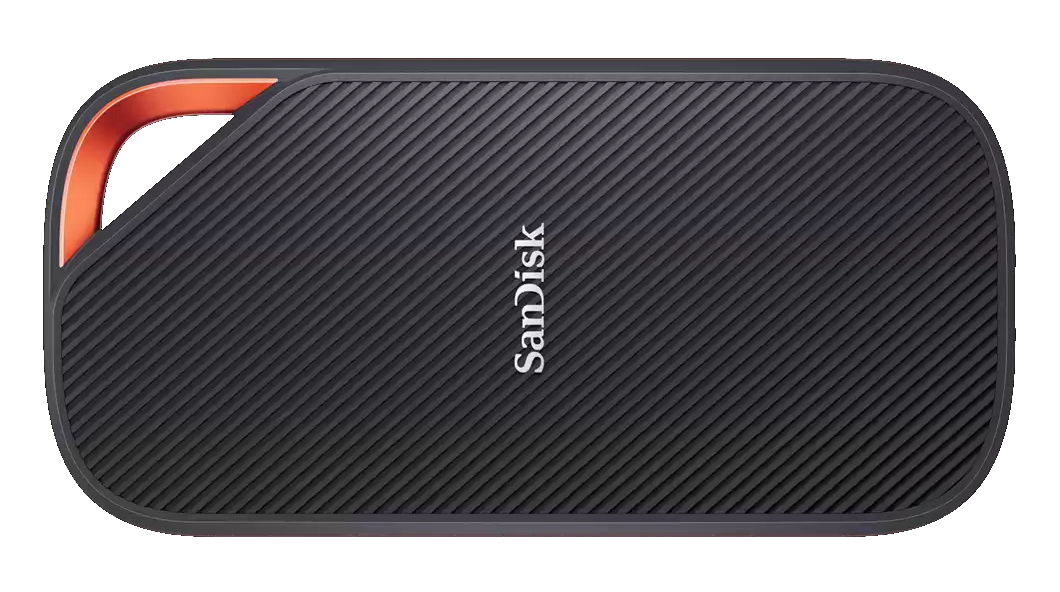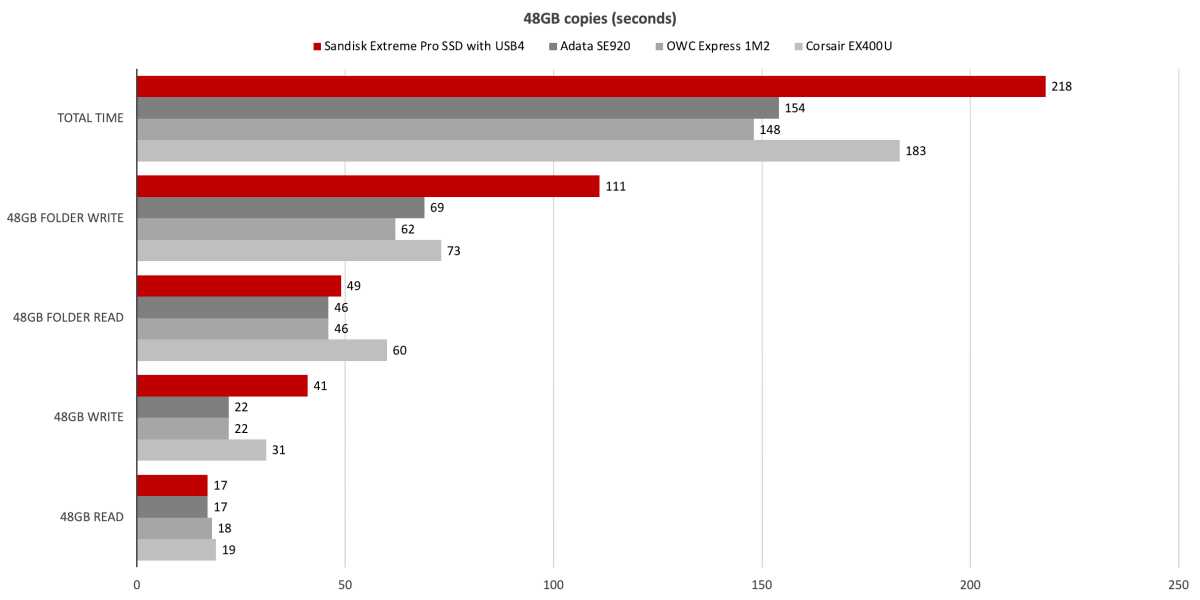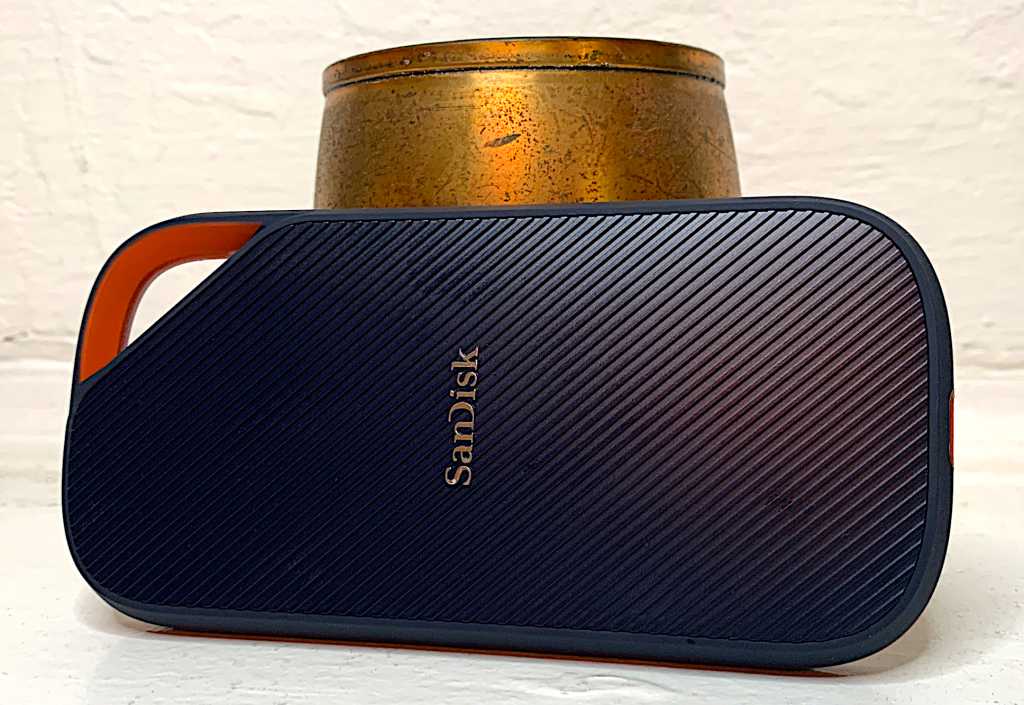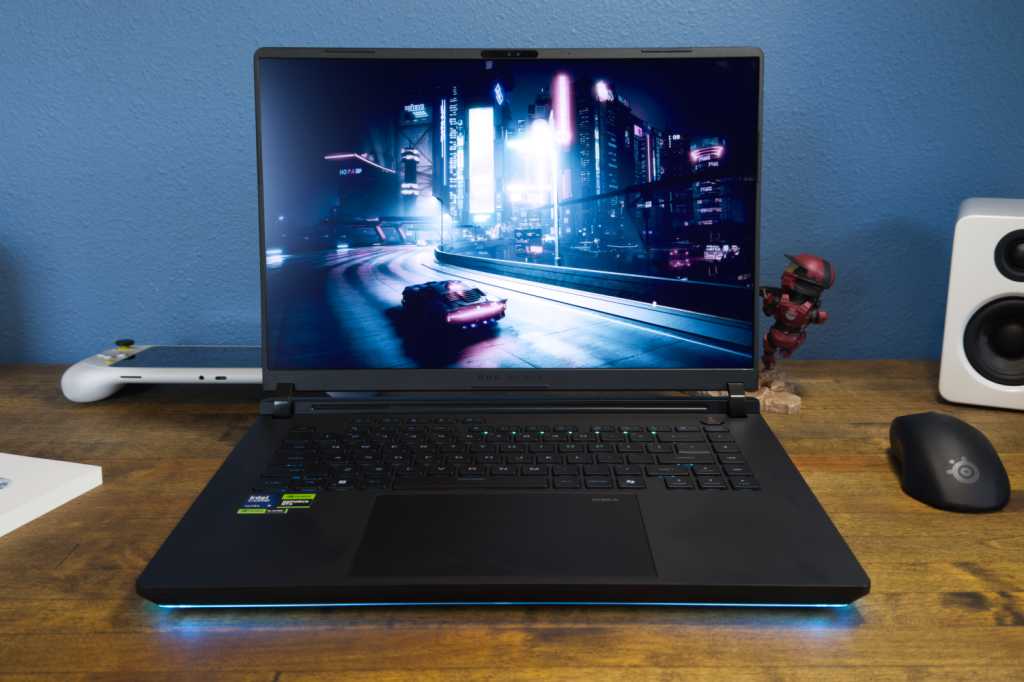The SanDisk Extreme Pro USB4 SSD is a visually appealing, robust, and relatively affordable external SSD boasting 40Gbps speeds. However, our testing revealed inconsistent connection speeds and performance that, while generally good, lagged behind competitors in the same category.
Design and Features
The SanDisk Extreme Pro USB4 SSD maintains the familiar design language of its predecessors, albeit in a larger form factor. Measuring 5.4 inches long, 2.2 inches wide, and 0.45 inches thick, with a weight of around 5.4 ounces, it feels substantial and well-built. The dark gray casing with copper accents, combined with a textured silicone covering, provides a comfortable and secure grip.
 The SanDisk Extreme Pro USB4 SSD features a rugged design with a textured silicone surface.
The SanDisk Extreme Pro USB4 SSD features a rugged design with a textured silicone surface.
The drive utilizes the 40Gbps variant of the USB4 protocol. While 20Gbps USB4 implementations exist, they are less common. Future USB4 v2 and Thunderbolt 5 standards promise 80Gbps speeds, but compatible SSDs are still rare.
SanDisk offers a five-year warranty for the Extreme Pro USB4 SSD, likely subject to TBW (Terabytes Written) limitations, though this isn’t explicitly stated. Based on our observed write speeds, we suspect the drive uses TLC NAND flash, typically rated for around 600 TBW per terabyte.
Pricing and Availability
The SanDisk Extreme Pro USB4 SSD is available in 2TB and 4TB capacities, priced at $280 and $430, respectively. This pricing is competitive with pre-built USB4 SSDs like the Adata SE920 and OWC Envoy Pro FX, but less budget-friendly than options like the Corsair EX400U. DIY enthusiasts can build their own external SSDs for less using enclosures like the Ugreen CM642, but this requires additional effort. Overall, the Extreme Pro’s pricing is reasonable within its segment.
Performance Analysis
While fast, the Extreme Pro USB4 SSD didn’t quite match the performance of competing USB4 drives in our tests. We also encountered connection speed issues on our testbed.
Using the included 40Gbps-rated cable, the drive initially connected at only 10Gbps on one Thunderbolt 4 port and 5Gbps on another, triggering a Windows warning about potential performance limitations. However, it achieved full 40Gbps speeds on an M1 Max Mac Studio’s Thunderbolt 4 port. Switching to a high-quality Thunderbolt 4 cable resolved the issue on the PC testbed, but the problem reoccurred in subsequent tests.
 CrystalDiskMark sequential tests show the SanDisk Extreme Pro holding its own, but not leading the pack.
CrystalDiskMark sequential tests show the SanDisk Extreme Pro holding its own, but not leading the pack.
This inconsistency could be due to compatibility issues with our Intel-based Thunderbolt 4 implementation, or potential handshaking/thermal management issues within the drive itself. We have not encountered similar problems with other USB4 devices on this testbed. Further investigation is needed to pinpoint the cause.
When operating at 40Gbps, CrystalDiskMark 8 sequential read/write speeds were competitive, though not class-leading. A noticeable weakness emerged in single-queue/single-thread write performance, typical of Windows operations.
 Random 4K performance was generally good, but single-thread write speeds were a significant bottleneck.
Random 4K performance was generally good, but single-thread write speeds were a significant bottleneck.
This single-thread write performance deficit also impacted real-world file transfer speeds, where the Extreme Pro lagged behind some 20Gbps USB 3.2 Gen 2×2 drives.
 Real-world file transfer tests highlighted the impact of the lower single-thread write performance.
Real-world file transfer tests highlighted the impact of the lower single-thread write performance.
 Large file transfer speeds, while decent, were slower than competing USB4 drives.
Large file transfer speeds, while decent, were slower than competing USB4 drives.
Should You Buy It?
The SanDisk Extreme Pro USB4 SSD is a well-designed, durable, and reasonably priced drive that offers good performance for most tasks. However, the connection inconsistencies and comparatively lower performance compared to other 40Gbps SSDs give us pause. We recommend waiting for a potential revision or exploring alternative options in the meantime.











